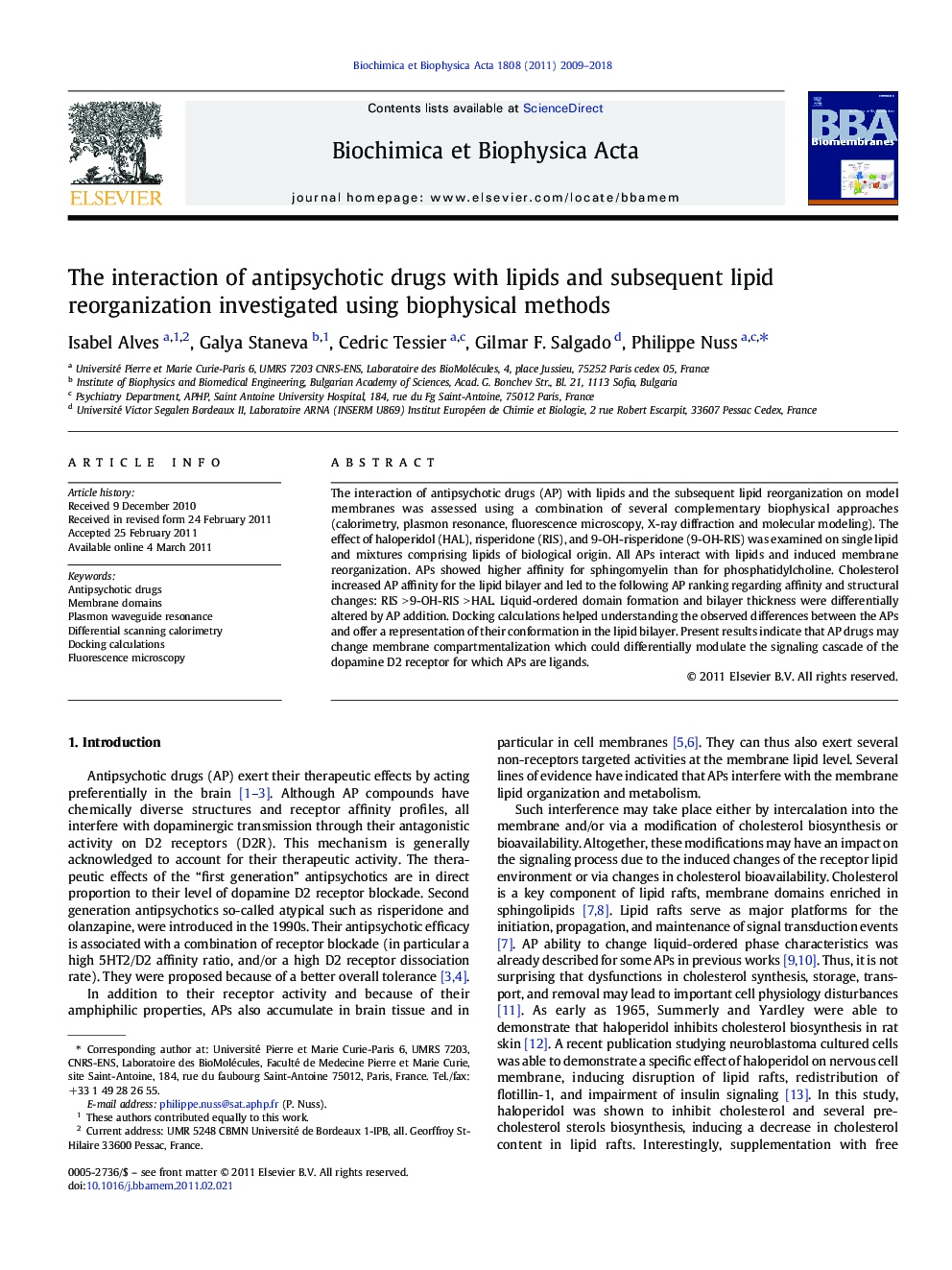| Article ID | Journal | Published Year | Pages | File Type |
|---|---|---|---|---|
| 1944614 | Biochimica et Biophysica Acta (BBA) - Biomembranes | 2009 | 10 Pages |
The interaction of antipsychotic drugs (AP) with lipids and the subsequent lipid reorganization on model membranes was assessed using a combination of several complementary biophysical approaches (calorimetry, plasmon resonance, fluorescence microscopy, X-ray diffraction and molecular modeling). The effect of haloperidol (HAL), risperidone (RIS), and 9-OH-risperidone (9-OH-RIS) was examined on single lipid and mixtures comprising lipids of biological origin. All APs interact with lipids and induced membrane reorganization. APs showed higher affinity for sphingomyelin than for phosphatidylcholine. Cholesterol increased AP affinity for the lipid bilayer and led to the following AP ranking regarding affinity and structural changes: RIS > 9-OH-RIS > HAL. Liquid-ordered domain formation and bilayer thickness were differentially altered by AP addition. Docking calculations helped understanding the observed differences between the APs and offer a representation of their conformation in the lipid bilayer. Present results indicate that AP drugs may change membrane compartmentalization which could differentially modulate the signaling cascade of the dopamine D2 receptor for which APs are ligands.
Research highlights► Antipsychotic drugs (APs) interact with lipids and induced membrane reorganization. ► APs showed higher affinity for sphingomyelin than for phosphatidylcholine. ►Cholesterol addition in lipid mixture increased APs affinity for the lipid bilayer. ► AP addition differentially modified liquid-ordered domain formation and bilayer thickness. ► Docking studies indicate that APs can differentially intercalated into the lipid bilayer.
